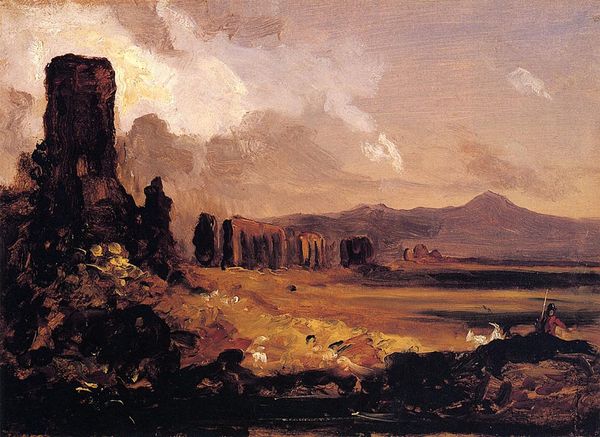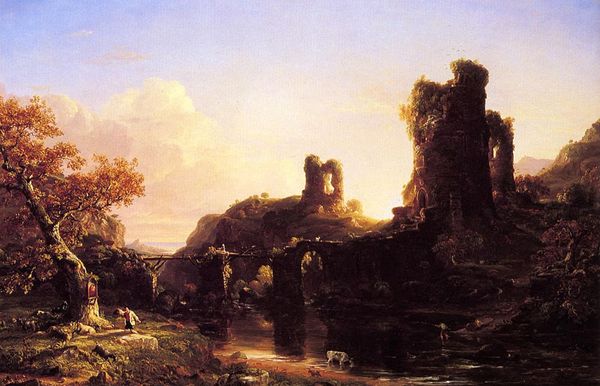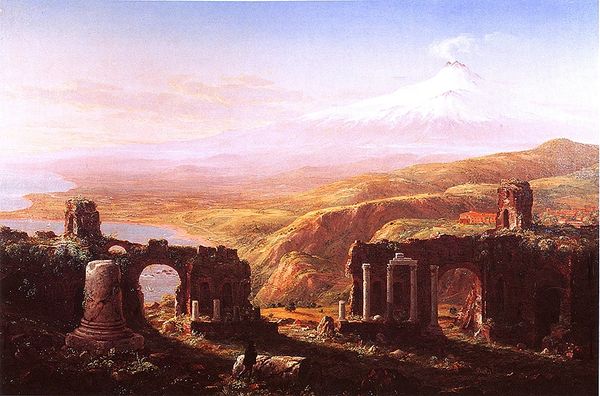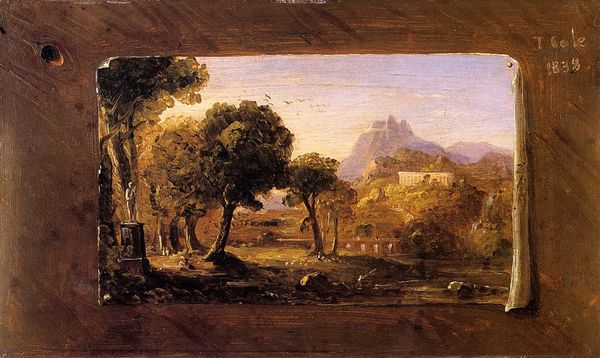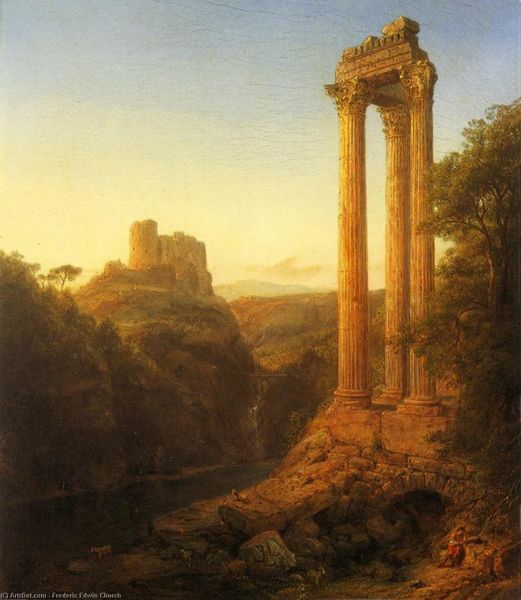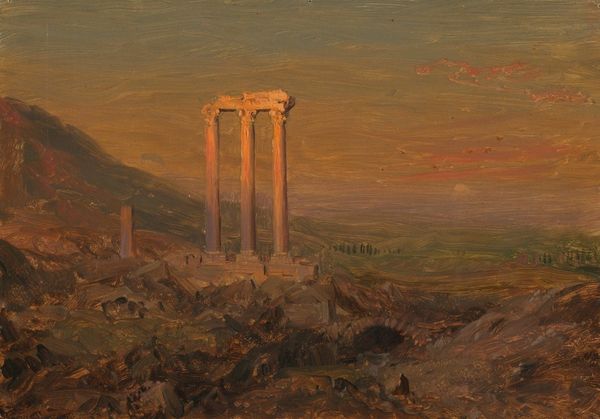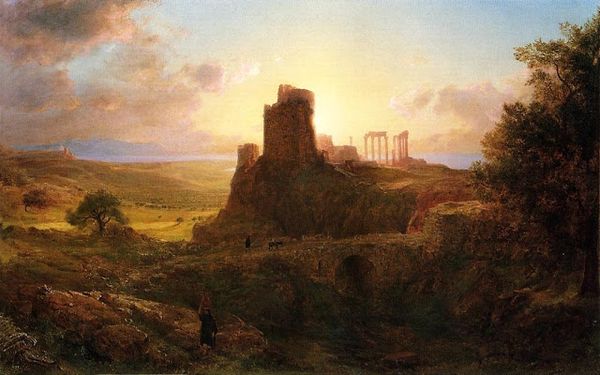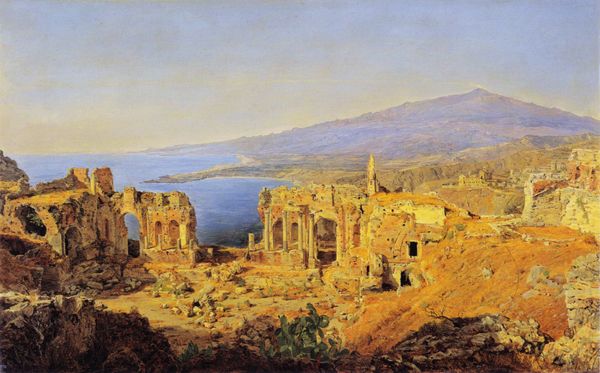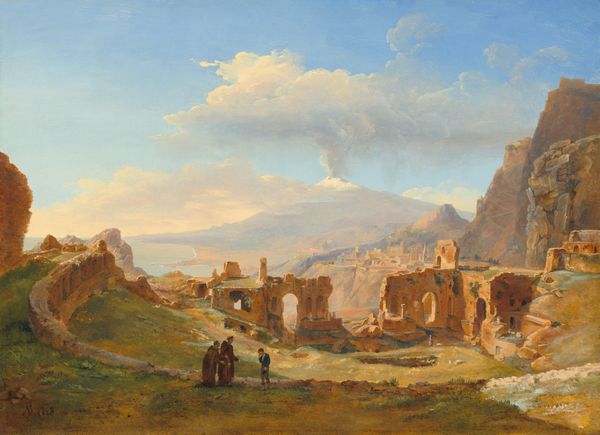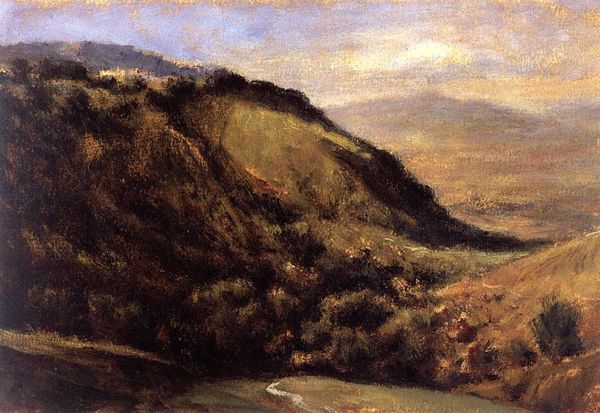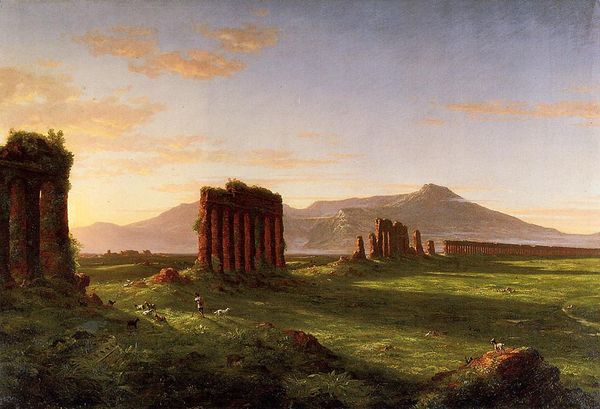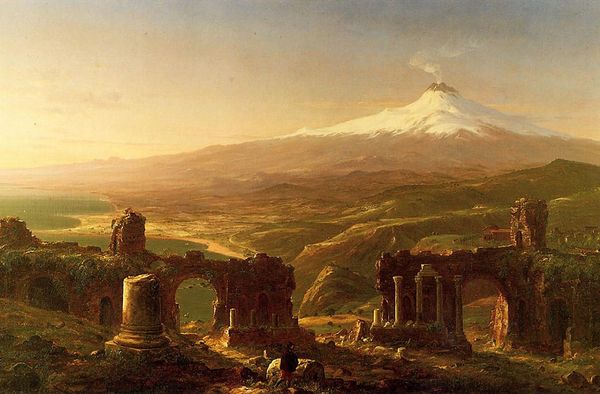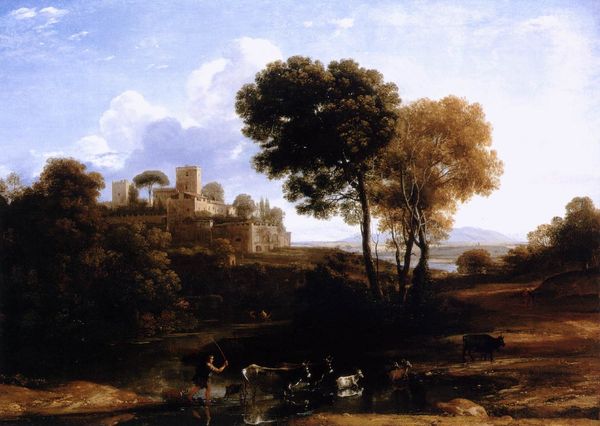
oil-paint
#
sky
#
oil-paint
#
landscape
#
classical-realism
#
oil painting
#
column
#
romanticism
#
history-painting
Dimensions: 30.48 x 40.97 cm
Copyright: Public domain
Editor: We're looking at Thomas Cole's "The Ruins of Taormina," painted in 1842. It’s an oil painting depicting the remains of an ancient structure overlooking a landscape. There's a sense of melancholy that pervades it, the grandeur of the past contrasted with the decay of the present. What stands out to you most in this work? Curator: I'm drawn to how Cole uses these ruins to comment on the cyclical nature of power and civilization. These crumbling structures were once symbols of a dominant culture, but now they are picturesque remnants. Cole's perspective wasn't simply about aesthetics, it critiqued the colonial gaze. Consider the way the landscape itself seems to reclaim the architecture – nature endures while human endeavors fade. Who benefits from the aestheticization of ruins, and what stories are being erased in that process? Editor: That’s a compelling point. I hadn't thought about it in terms of colonial critique. So, it's not just about the picturesque; it’s about power dynamics and the legacy of colonialism? Curator: Precisely. Think about the role of landscape painting during this era. It was often used to justify expansion and control, subtly reinforcing a sense of entitlement over land and resources. Cole is playing with that tradition, but he also inserts a critical perspective by foregrounding the ruins, questioning the permanence of any empire, including America's own. Can we separate the aesthetic appeal of the image from its inherent political messaging? Editor: That makes me reconsider my initial perception. It's much more layered than I initially realized. I was focused on the romantic aesthetic. Curator: Good art should challenge our initial perceptions. It prompts us to consider the complex intersections of history, power, and representation. It makes me think about our role in shaping cultural legacies. Editor: I'll definitely carry that in mind when analyzing art going forward. Thanks!
Comments
No comments
Be the first to comment and join the conversation on the ultimate creative platform.
